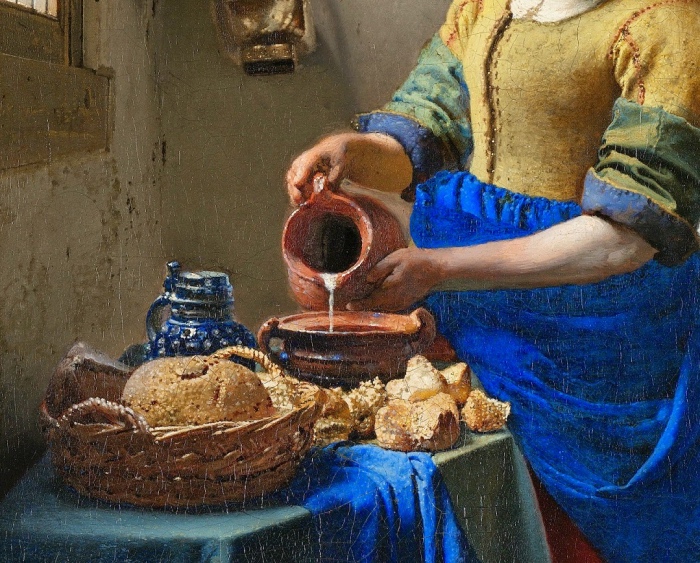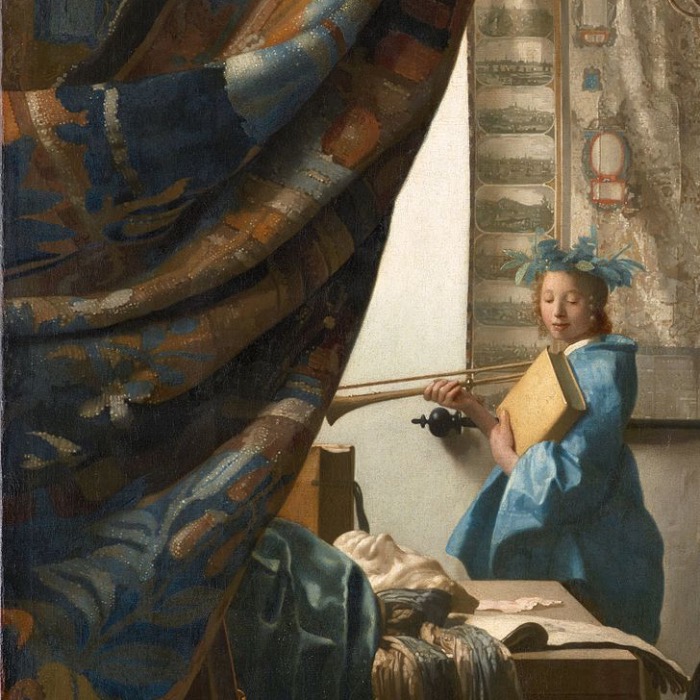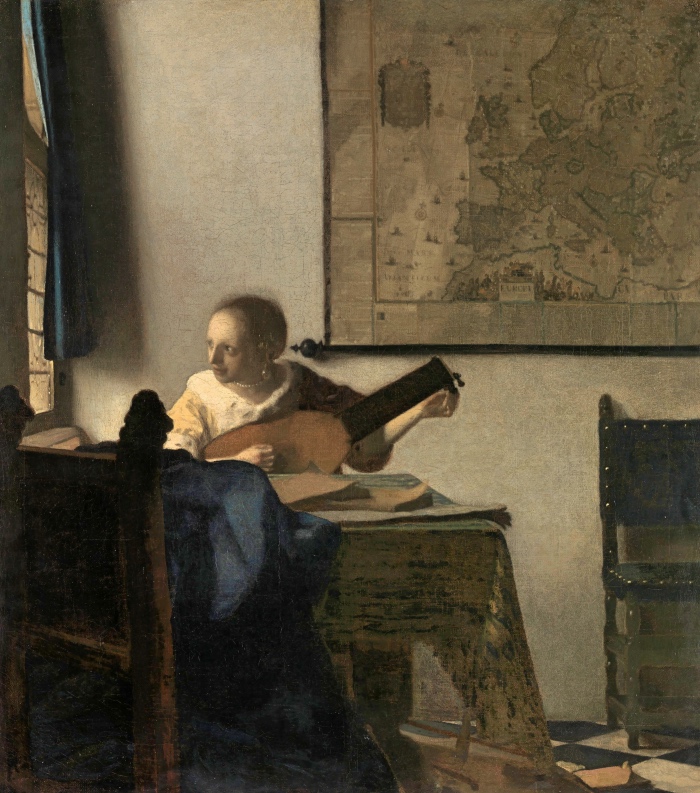
BIOGRAPHY OF VERMEER: 5 THINGS TO KNOW
A biography of Vermeer in five points, to learn the life and works of the artist, understand better his style and why he was rediscovered only at the end of the 19th century.
Are you ready to learn everything about Vermeer?
Biography of Vermeer: 5 things to know
1. JAN VERMEER’S EARLY LIFE AND HIS ARTISTIC TRANING
Jan Vermeer was born in Delft on October 30th 1632.
His father was an art dealer, a silk weaver and a manager of a tavern that Jan took over after his father’s death in 1655.
Since he was very young Vermeer frequented artists of Delft, and around the half of 1640 he received his artistic training.
2. JAN VERMEER ARTIST IN DELFT
In 1653 Vermeer married a Catholic woman who would give birth to 15 children, and in the same year became a master of the Guild of Saint Luke, a trade association for painters in Delft.
Vermeer never left his birthplace, and didn’t paint many paintings, since the most of them were still in his studio when he died.
The artist painted, and at the same time was an art dealer and manager of his family’s tavern, and had a comfortable lifestyle, until in 1672 France invaded the Netherlands. After that year financial trouble began.
In Delft, you can visit the Vermeer Centrum Delft, a place that tells the story of the artist, his works and where you can also play with a camera obscura (the predecessor of the camera) to see how Vermeer used it to improve the light and perspective in his paintings.
For your visit you can book your ticket now by selecting a date.
3. VERMEER’S STYLE AND WORKS
Vermeer’s works are characterized by warm colours inspired by paintings of Rembrandt School, while composition and subjects are common to other painters contemporary with him.
But his attention focuses on description of interior of Dutch houses, light and colour.
Vermeer’s paintings seem to be forerunner of photography, and he probably used the “camera obscura”, an instrument used also by other artists, and whose operation explains, for instance, how Canaletto painted when he painted his vedute (views).
It is said that Vermeer used the camera obscura to define the outlines of the room where he put the character to be portrayed. Maybe for this reason his paintings were considered cold representation of reality for a long time.

4. REDISCOVERY OF VERMEER
Jan Vermeer was rediscovered only at the end of the 19th century, and now his works are considered among the best of the Dutch Golden Age.
Slightly over 40 paintings have arrived to the present day, and only 16 are authentic.
Vermeer was a meticulous artist and the execution of his paintings required a long period of work.
5. VERMEER’S DEATH
The beauty of Vermeer’s works lies in the simplicity of subjects, such as The Milkmaid who is pouring some milk from a jug in the kitchen, and in the light that surrounds the rooms and gives a feeling of warmth and intimate setting to the scenes, such as in The Allegory of Painting.
Vermeer’s main buyer was Pieter Claesz Van Ruijven, who wasn’t able to get the artist out of debt.
To Vermeer the bad financial situation and his large family became unbearable and, being burdened with debts, died young in December 1675.
The following year his wife was obliged to declare bankruptcy.


